A suspended chandelier of oil lamps, to light our 16th century German tent.
As my husband and I lay in our comfortable rope bed, looking up at the luscious red tent lining, we agreed that what we really needed was a hanging chandelier to provide ambient lighting, rather than the spot lighting that our candle lanterns supplied…
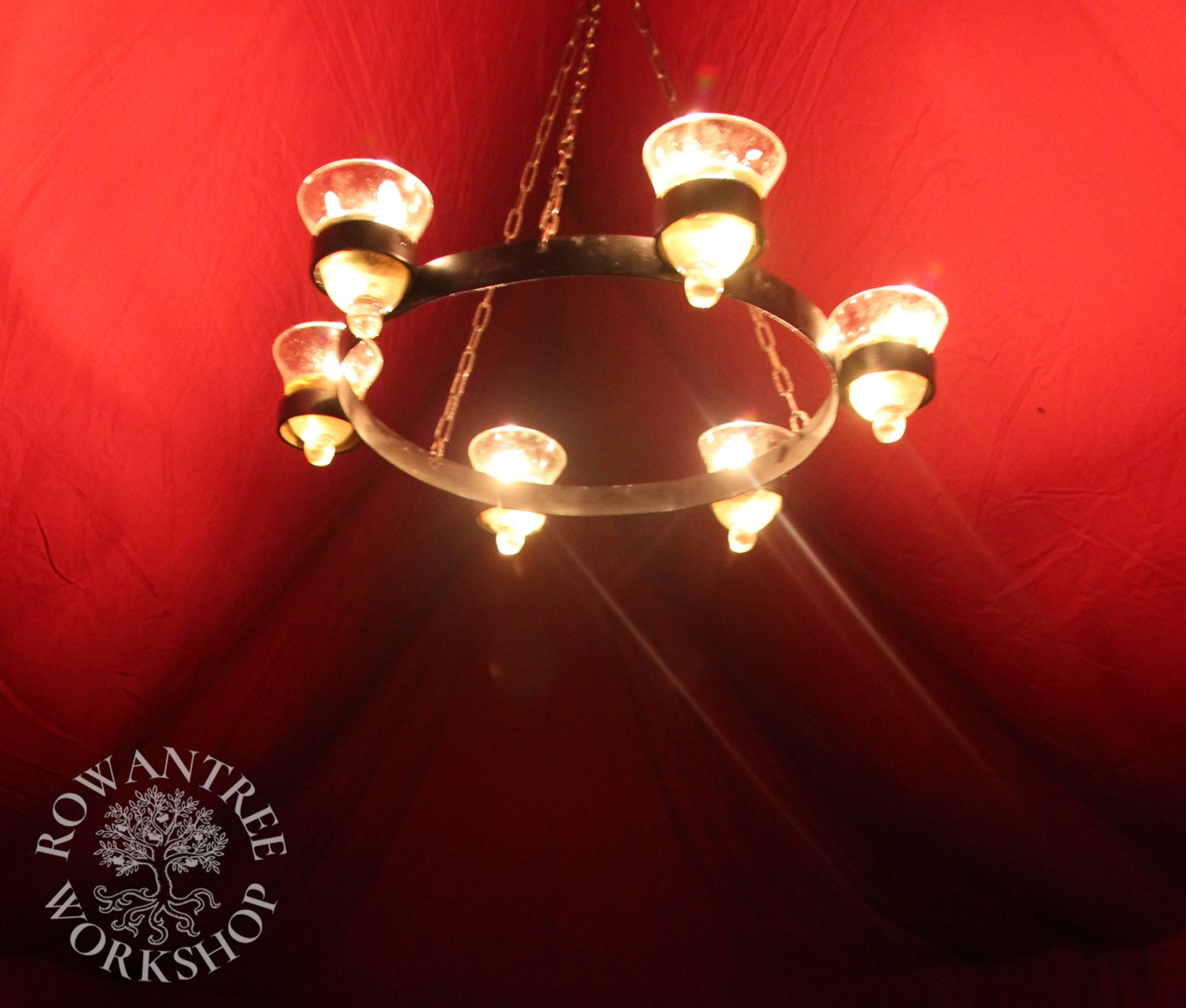
Research and Design
Oil lamps with floating wicks have been in use since ancient Egypt (Sherman 1993) and are often seen in medieval manuscript illustrations suspended from the ceiling. The Medieval Household (Egan 1998) notes that the shape of both ceramic and glass oil lamps remained the same throughout the medieval period – a saucer with a finger-shaped spike at the base. The fresco by Giotto shows glass lamps of this style.
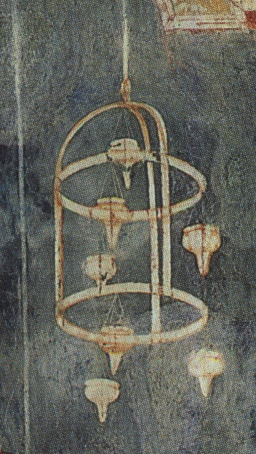
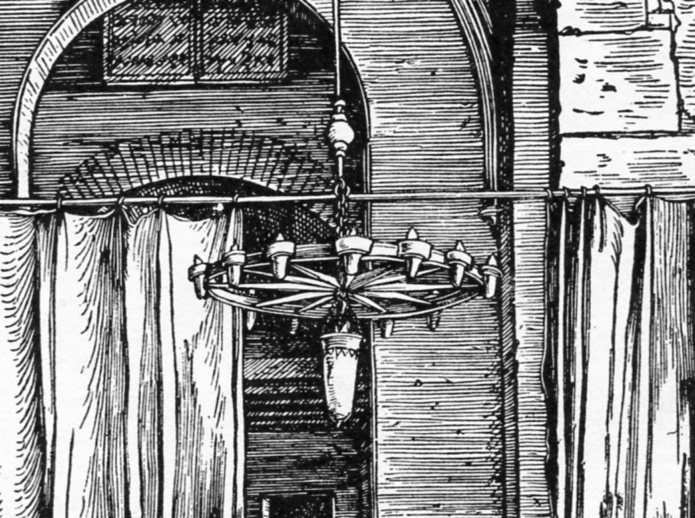
The frame of the chandelier was based on the Albrecht Dürer woodcut, which shows a wheel of oil lamps on a circular frame, hung from a central chain. Other images show how the chandelier can be lowered down to fill and light, then hoisted up out of the way.
Construction
I had been looking for suitable glasses for ages and finally found a cheap modern candle stand with 9 well-shaped glasses – enough for 6 glass lamps and some spares.
The design is a simple metal ring, with 6 small circles welded around the perimeter. These are sized to hold the stems of the lamp glasses firmly, but so they can be removed. My husband Nico bent 25mm wide steel strap to shape and welded up the frame, then painted it matt black to avoid rust.
Three chains are attached to holes drilled in the hoop, linked to a single chain. The chain just reaches to the roof of the tent and allows us to walk underneath easily. The chain is attached to a long cord, which runs through a loop welded onto the tent frame knuckle, to raise and lower the chandelier and tie it off to the side poles.
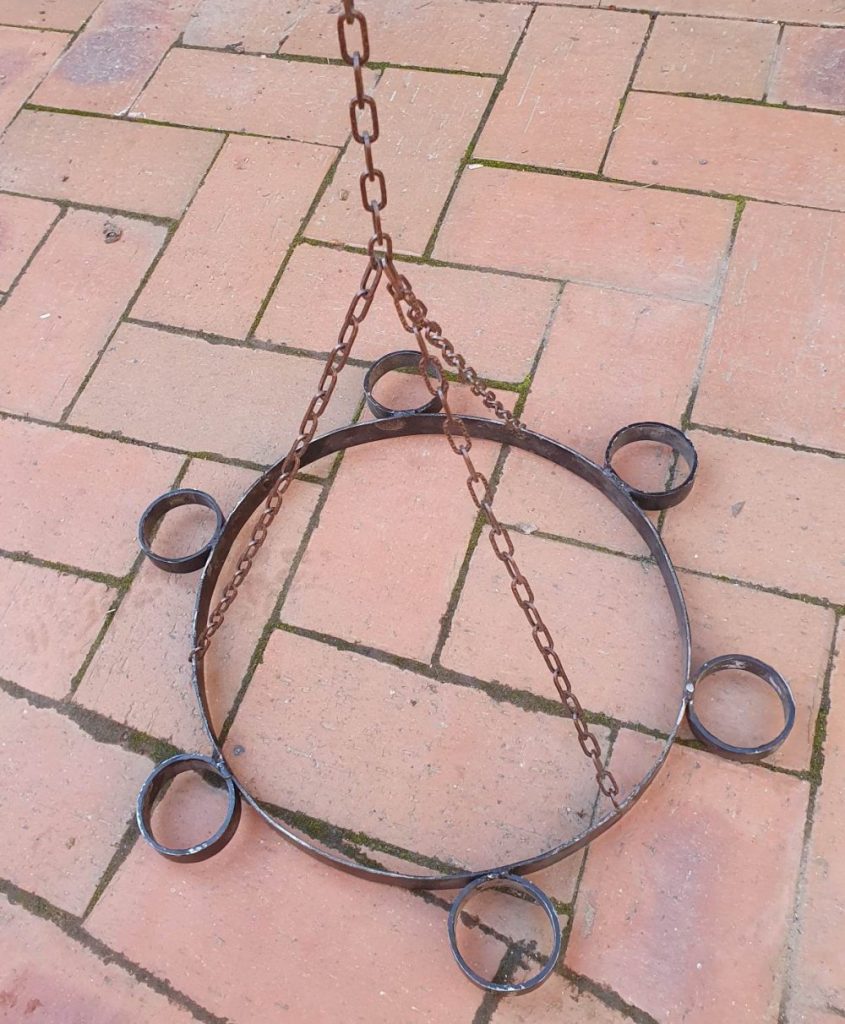
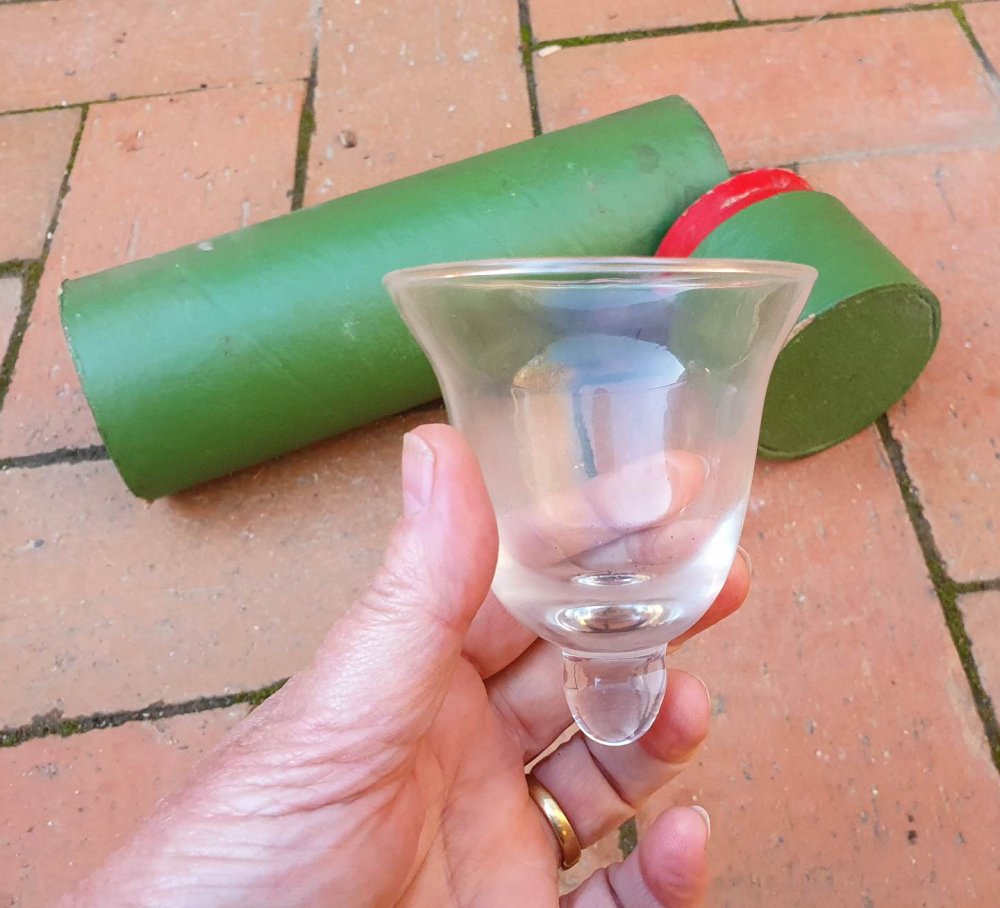
I made a case from a cardboard mailing tube (adapted and painted) to hold the glasses and wicks, and avoid breakage. The olive oil is stored in a Chianti bottle – a good medieval shape with a well fitted cork lid. And beeswax tapers make it much easier to light the floating wicks – a regular candle drips wax all over the oil and can interfere with the floating action.
Churches use oil lamps with floating wicks, so I bought a packet of them from a church supply shop. The wicks are set into little metal crosses (or wax disks), which rest on the top of a cork float. The float has a hole in the centre to admit the oil, and a thin metal top to prevent burning.
The box of wicks comes with a single float, but it was easy to make five more using slices of cork. I cut neat holes out of the middle using a wad punch, and inserted a brass grommet in each cork.
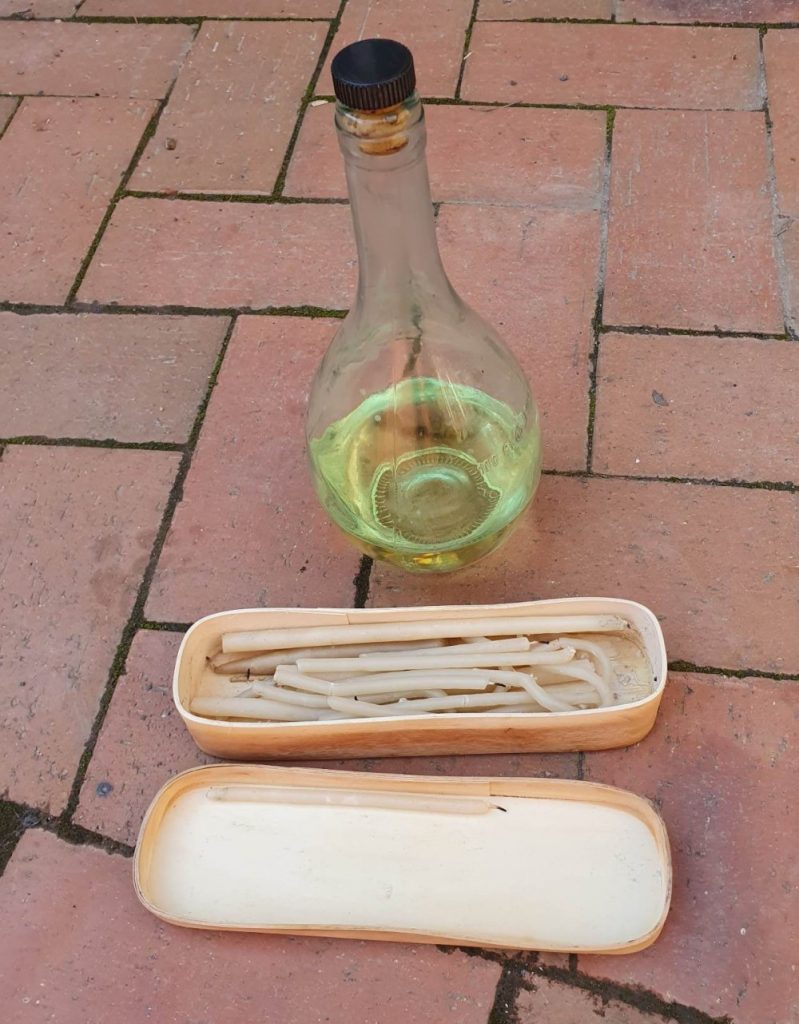

I tested on the best fuel to use. To my surprise, clear lamp oil (from a camping store) was not good – it burned hot, fast and very smoky. Light olive oil burned clear, even and smokeless! It had the added advantages of being more historically accurate, easier to get and cheaper.
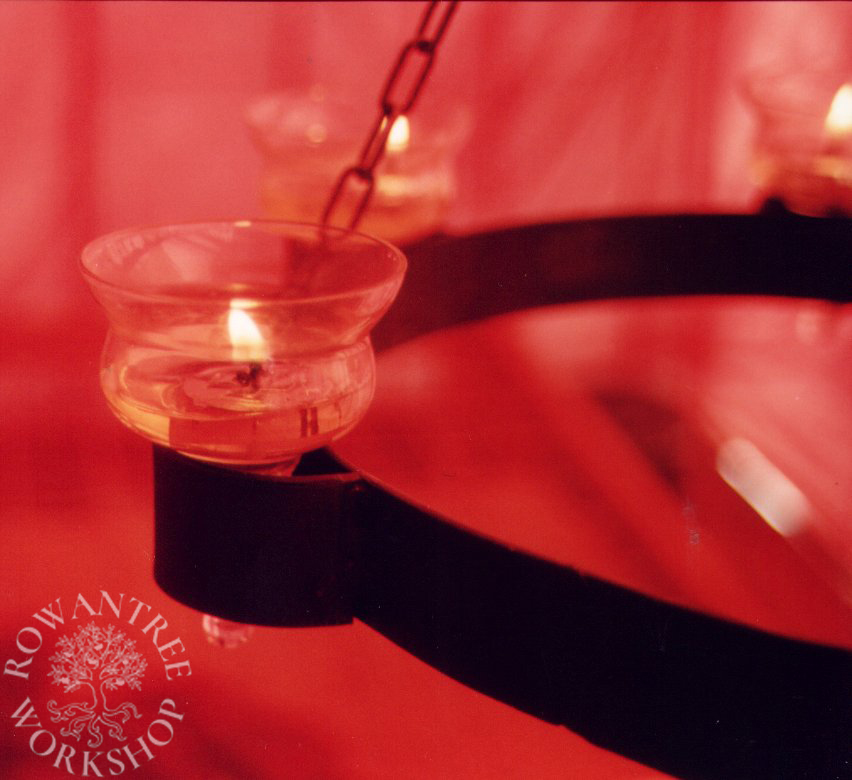
Afterthoughts
The chandelier has worked really well – it casts a lovely mellow light and makes it easy to see at night. The suspension system keeps the chandelier well clear of the roof lining, even under heavy wind. 500mls of oil lasts us a week, burning the 6 lamps for about 4 hours every night.
The only problem we have ever had was when one lamp burned right down – the glass exploded! We have learned to put a little water in the base before adding the oil to prevent this.

